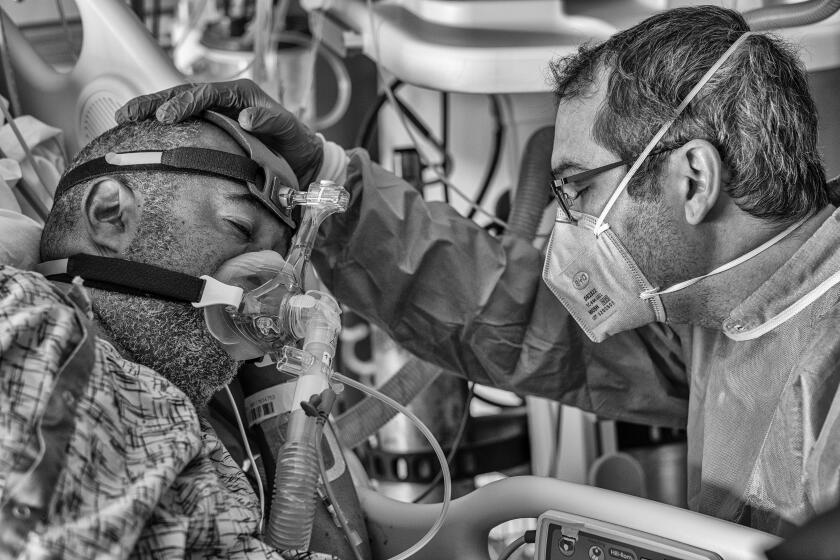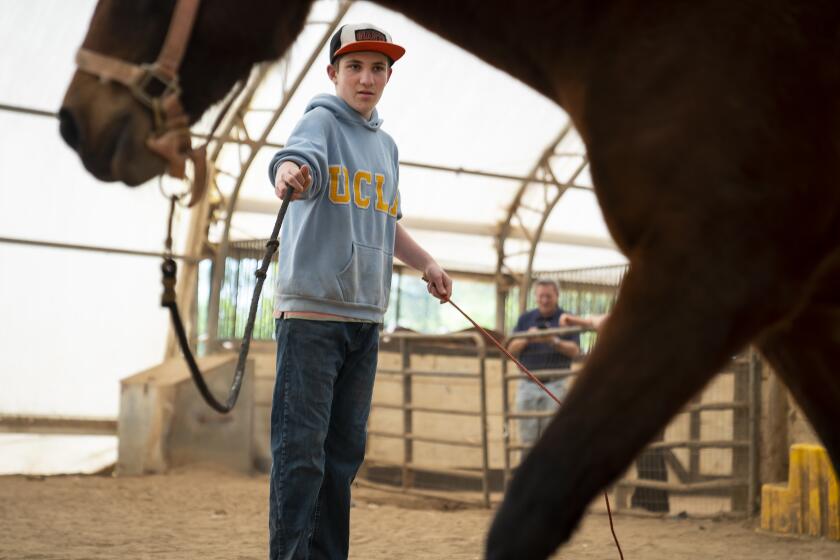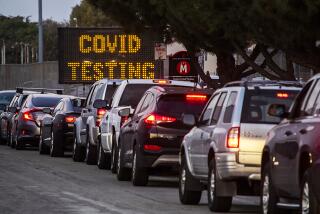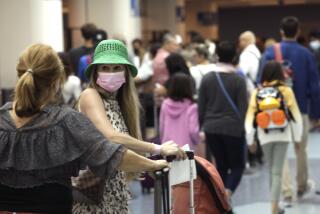U.S. reaches 1 million COVID deaths — and the virus isn’t done with us

David Dowdy hunches in front of his laptop at his kitchen table as he watches COVID-19 data trickle in. One death. Then another. And another. And another.
That’s a typical day for the Johns Hopkins University epidemiologist, his screen propped up on board game boxes and magazines, the clock progressing through another 12-hour day.
Dr. Dowdy is a tuberculosis researcher, but for the last 25 months he’s been keeping track of national and global coronavirus trends, doing his own analysis of the spread of the virus in an attempt to discern where the pandemic may be headed.
The metric he uses most often is death.
He tries not to check the data obsessively because he fears he’ll overinterpret trends where they don’t yet exist. He tries, for his own sake, to make sure it’s not the first thing he does when he wakes up.
Then, on Monday, there it is: America’s 1 millionth COVID-19 death, according to the Centers for Disease Control and Prevention’s National Center for Health Statistics.
L.A. County remains far from meeting its own metrics for a new mask order, but a moderate increase in coronavirus case rates has officials concerned.
As airlines drop mask mandates and massive weddings resume as planned, much of the country is experiencing what feels like a return to normalcy. But this milestone is an indelible reminder that the people who see the losses up close — at statistical, clinical and even familial levels — know that the reality of the situation is more painful and defining than the cultural moment suggests.
One million casualties from a virus represent a nation’s despair and an avalanche of personal loss: missed cancer screenings and surgeries; vanishing employment and income; declines in school attendance; broken families and relationships; waves of anxiety, addiction, homicide and overdose.
COVID-19 isn’t done with us.
Karen Garcia remembers watching tears well up in her patient’s eyes.
He was in his mid-30s and initially appeared healthy, but COVID-19 was continuing its rampage through each of his body’s systems, eventually clogging his lungs.
It was late March 2020, and the intensive care unit at Valleywise Health Medical Center in Phoenix was starting to overflow with coronavirus patients. Garcia, who had become a nurse just eight months prior, was working long past the end of her 12-hour shifts. She worried incessantly about her own health, so concerned about infecting her young children that she sometimes stayed in a hotel.
No matter what they did, Garcia and the other nurses couldn’t get the patient’s blood oxygen levels above 90%. There was a rush to intubate him and the patient, Garcia recalls, didn’t even have time to see his mother on FaceTime. He died hours later.
“That situation really signified for me how real this pandemic was — and how bad it was going to get,” Garcia, 32, said. “Young, old, all races, the virus was taking the lives of anyone.”
In the early days of the pandemic, as she cared for increasingly sick patients and watched in terror as the death tally surged, she had to cope with another constant worry: Will I be deported?
Garcia, who is among roughly 700,000 “Dreamers” who came to the United States as children, grew up without legal status and was allowed to stay under the Obama-era policy of Deferred Action for Childhood Arrivals, better known as DACA. Then the Trump administration moved to repeal the protections.
“I’m on the front lines trying to save lives — American lives — and there was a concern I wasn’t going to be able to do that anymore,” she said. “It was challenging on top of a deadly pandemic.”
Her worries began to recede a bit after June 2020, when the Supreme Court rejected the Trump administration’s planned repeal, saying it did not provide adequate justification.
How to process the pandemic death toll? For one hospital chaplain, it means also remembering relatives left behind.
There was more time to think about her career. Every week, it seemed, another co-worker quit, and she started to question whether nursing was really the best fit for her.
“The burnout, the PTSD, it’s a problem,” she said.
In the end, Garcia left the hospital in Phoenix, opting instead to work as a travel nurse — an opportunity that, especially during the height of pandemic demand, paid much better. After a stint in Texas, she is now working in rural Arizona.
On a recent evening, after finishing her 12-hour shift at a hospital in Kingman, in the northwest corner of the state, Garcia considered the reality that, before long, the U.S. would surpass 1 million COVID-19 deaths.
“It’s more than a number,” she said.
“A mom or dad is never going to come home.”
In Milwaukee, Tonia Liddell thinks every day about one of those moms: her own.
She misses her fried catfish and spaghetti and the way she would lovingly tease her. She misses the strength that her mother, Patricia Liddell, evidenced after the death of Tonia’s brother, who, as a toddler, was killed by a drunk driver.
In recent years, Liddell said, Patricia had been in and out of assisted living facilities with chronic health issues, and she was in a facility in February 2020 when she contracted COVID-19. She was admitted to a Milwaukee hospital, where she died at age 68.
On March 11, 2020 — the day after Liddell’s mother died — the World Health Organization declared the spread of the coronavirus a pandemic.
“It’s been more than two years, but somehow it seems so much longer,” said Liddell, who organized a celebration of life service for her mother over Memorial Day weekend in 2020. A few weeks later, an uncle died of COVID-19.
While she grieved the loss of family members who died during the pandemic, Liddell, 46, who is a violence intervention specialist in Milwaukee, also had to cope with a historic rise in homicides in the city.
“The death from COVID, then homicides, and repeat,” she said, “has just made everything hurt that much more.”
Even as many COVID-19 restrictions have eased in recent months, Liddell still wears a mask. It may be in an ebbing phase, but she knows more than anyone that there is still risk.
“This pandemic,” she said. “It’s ripped up my life.”
Dowdy, 45, said the hardest days are the ones defined by false hope, days when he has watched the death counts decrease only to bounce back or be drowned in a sea of corrected data that show little has changed.
He doesn’t help run the COVID-19 tracker at Johns Hopkins, but he says analyzing the data is like “having a critically ill family member. You find yourself cheering for the number to go down just a little bit today versus yesterday. And you know there’s going to be a long time frame before there’s any sort of recovery — you know in your mind that you need to pace yourself.”
Dowdy found himself taking to Twitter to announce any marginal improvements in the death numbers — in part for his followers, but “also for myself.”
“I put an optimistic spin on the numbers,” he said, but “I knew there was an enormous tragedy unfolding underneath them.”
Eventually, the emotional exhaustion caught up to him. “You want to consistently empathize and realize what a tragedy it is,” he said. “But no one is really capable of feeling that day in and day out, year after year after year.”
More than a year after he was infected with the coronavirus, 14-year-old Ami Korn, who now lives in Georgia, is still struggling to fully recover.
He’s found comfort in appreciation: celebrating when his 18-year-old daughter could return to school and the news that his neighbor, who’d been critically ill in the ICU for several months, had started to improve.
The epidemiologist said he worries about polarization in the U.S. “People are perceiving the pandemic in a dichotomous view,” he said, adding, “Some feel it’s over and we are there. Others feel we must remain vigilant forever. The reality is in between the two poles.”
Across the globe, epidemiologists like Dowdy have seen a 75% reduction in daily deaths in the last three months — the most dramatic reduction yet. Even with that progress, COVID-19 is still among the top three leading infectious causes of death.
And Dowdy is still watching the data points trickle in: One death. Then another. And another.
More to Read
Start your day right
Sign up for Essential California for news, features and recommendations from the L.A. Times and beyond in your inbox six days a week.
You may occasionally receive promotional content from the Los Angeles Times.











